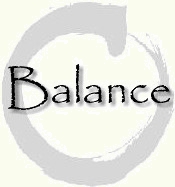reflexology
What it is:
Reflexology is a therapeutic method of relieving pain by systematically stimulating pressure points on the feet and hands. This controlled pressure alleviates the source of the discomfort. In the absence of any particular malady or abnormality, reflexology may be as effective for promoting good health and for preventing illness as it can be for relieving symptoms of stress, injury, and illness.
Reflexologists work from maps of predefined pressure points that are located on the hands and feet. These pressure points are reputed to connect directly through the nervous system and affect the bodily organs and glands. The reflexologist manipulates the pressure points according to specific techniques of reflexology therapy. By means of this touching therapy, any part of the body that is the source of pain, illness, or potential debility can be strengthened through the application of pressure at the respective foot or hand location.
How it helps:
Reflexology promotes healing by stimulating the nerves in the body and encouraging the flow of blood. In the process, reflexology not only quells the sensation of pain, but relieves the source of the pain as well.
Reflexologists report success in the treatment of a variety of conditions and injuries. One condition is fibromyalgia. People with this disease are encouraged to undergo reflexology therapy to alleviate any of a number of chronic bowel syndromes associated with the condition. Frequent brief sessions of reflexology therapy are also recommended as an alternative to drug therapy for controlling the muscle pain associated with fibromyalgia and for relieving difficult breathing caused by tightness in the muscles of the patient's neck and throat.
Reflexology applied properly can alleviate allergy symptoms, as well as stress, back pain, and chronic fatigue. The techniques of reflexology can be performed conveniently on the hand in situations where a session on the feet is not practical, although the effectiveness of limited hand therapy is less pronounced than with the foot pressure therapy.
Rwo-Shur Method
The Chinese Method of Foot Reflexology, also called the Rwo-Shur Method, originated from Father Josef Eugster, a Swiss Catholic Priest, who goes by the Chinese name Wu Rwo-Shur in 1977. He came to Taiwan some 30 years ago to preach in Taitung, at that time he suffered acute arthritis in his knees. Medicine was of no help, and his physicians advised him aged 37 that the disease was incurable A colleague begged to differ and advised if he learned reflexology, he could easily get rid of the problem.His colleague gave him a book about foot reflexology titled Good Health for the Future (1976) by Heidi Masafret. Father Josef didn’t understand how a method used on the feet could help his knees, but he began studying and when he first used reflexology on himself he could barely stand the pain, but he kept at it. Within two weeks, to his amazement, the arthritis disappeared, never to return. “I suddenly got the insight that reflexology could be my new mission method, an easy way to approach people and help those in need,” says Father Josef, a member of the Swiss Missionary Society of Bethlehem. With such a dramatic and successful introduction it came as no surprise that Father Josef proceeded to popularize reflexology throughout Taiwan and other Asian countries.
The Rwo Shur health method was brought to China in the mid-1980’s and is the most common form of Foot Reflexology in modern Asia.
His direct, results oriented approach lead to shorter more effective treatments. Today more attention is paid to stimulating the reflexes without causing discomfort. I am happy to adjust pressure to meet your preferences and goals.
